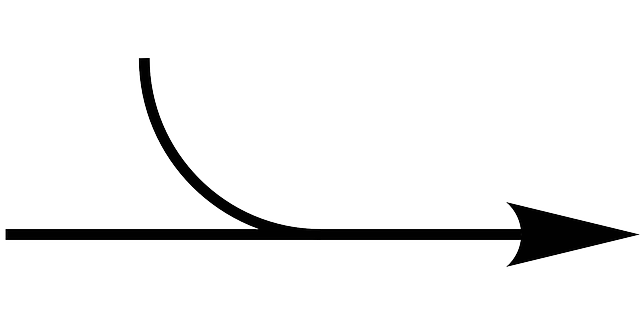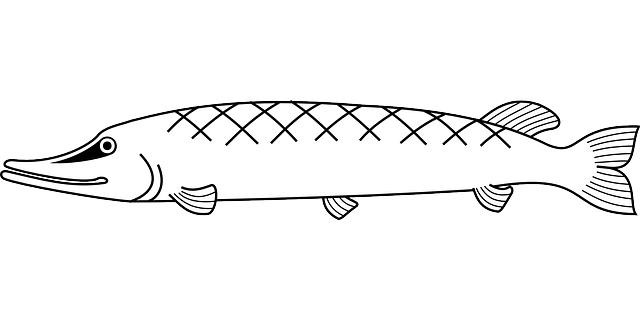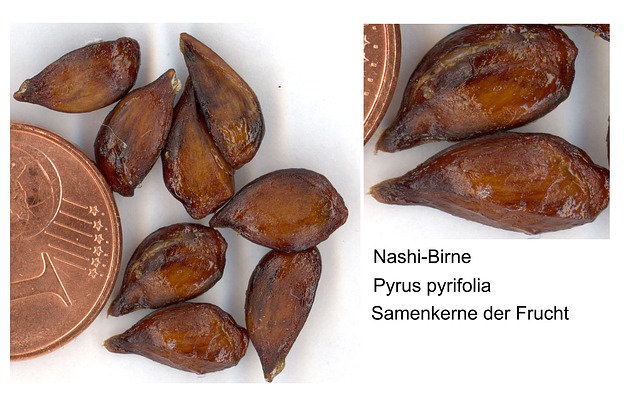داروينيس ماسيلاى
|
Darwinius masillae Temporal range: Eocene, 47 Ma PreЄ
Є
O
S
D
C
P
T
J
K
↓ | |
|---|---|
| Slab (specimen PMO 214.214) and counter-slab (specimen WDC-MG-210 reversed for comparison) of the Darwinius masillae holotype fossil | |
| التصنيف الفهمي | |
| مملكة: | الحيوان |
| Phylum: | الحبليات |
| Class: | الثدييات |
| Order: | Primates |
| Family: | Notharctidae |
| Subfamily: | Cercamoniinae |
| Genus: | ''Darwinius'' |
| Species: | ''D. masillae'' |
| Binomial name | |
|
Darwinius masillae Franzen et al., 2009 | |
الكشف عن حفرية قديمة قد تكون الحلقة المفقودة بين القردة والبشر الكشف عن هيكل عظمي لإحدى الثدييات التي يقدر عمرها بسبعة وأربعين مليون عام، قد يقدم للفهماء حلقة الوصل المفقودة بين القردة والإنسان ويقدم بالتالي حلاً للغز الذي طرحه داروين.
كشف الفهماء النقاب عن بقايا أحفورية محفوظة بشكل جيد لإحدى الثدييات الرئيسية، يقدر عمرها بحوالي 47 مليون سنة. والحفرية التي تم العثور عليها في منطقة ميسيل بالقرب من مدينة دارمشتات الألمانية تعبير عن هيكل عظمي لإحدى الثدييات التي تتشابه من الناحية التشريحية مع الإنسان والقردة، مما يعيد إلى الأذهان الجدل الذي أثارته وتثيره حتى الآن من وقت لأخر نظرية النشوء والارتقاء لداروين. ويرى بعض الفهماء حتى هذا الكشف من الممكن حتىقد يكون "الحلقة المفقودة" بين القرد والإنسان ويقدم دلائل على الأصل المشهجر بينهما، مما قد يقدم حلاً للغز الذي طرحه داروين.
أكثر الحفريات التي عثر عليها حتى الآن اكتمالاً
Bildunterschrift: Großansicht des Bildes mit der Bildunterschrift: الفهماء يطلقون على الحفرية أسم "داروينيوس ماسيلاي " تكريما للعالم تشارلز داروين وكان أحد الهواة قد عثر على هذه الحفرية عام 1983 وظلت في ملكيته الخاصة حتى عام 2007، إلى حتى وجدت طريقها لجامعة أوسلو. البروفيسور وعالم الحفريات النرويجي يورن هوروم، الذي قاد فريقاً من الفهماء قاموا بتحليل الحفرية على على مدى العامين الماضيين، أعرب أمس الثلاثاء 19 مايو/آيار في مؤتمر بمدينة نيويورك أثناء عرض الهيكل العظمي المكتشف حتى الثديية التي تم اكتشافها والتي يبلغ طولها 58 سنتيمترا هي أنثى يتراوح عمرها على الأرجح بين تسعة وعشرة شهور، وأضاف هوروم، أن"هذه هي أكثر حفرية مكتملة لهيكل عظمي لحيوان أولي يعثر عليها حتى الآن" وأنها من الممكن تشبه أحد الكائنات البشرية الأولى، لكن ليس من المرجح حتى تكون جداً مباشراً للبشر.
والحفرية مكتملة بنسبة 95 في المائة، حتى أطراف الكف والمخالب تم العثور عليها ولا ينقصها سوى الساق. وعلق ينس لورنس من معهد زينكينبرج للأبحاث الفهمية بمدينة فرانكفورت على ذلك بقوله: " لم نعثر فقط على الهيكل العظمي، ولكن على جميع مكونات الجسد بما في ذلك الأمعاء"، والتي تبين حتى إيدا كانت تتغذى على الثمار وأوراق الأشجار والحبوب.
هل تعتبر إيدا حلقة الوصل المفقودة بين القرد والإنسان؟
وأطلق هوروم على الحفرية اسم ابنته الصغرى "إيدا"، بينما أطلق عليها الفهماء اسم "داروينيوس ميسيلاي " تكريما للعالم تشارلز داروين. ويرى كثير من الفهماء حتى ايدا لا ترتبط بعلاقة قرابة من الدرجة الأولى مع الإنسان ووصفوها "بالعمة الكبرى". ويضع الباحث النرويجي آمالاً عريضة على الحفرية للتعهد على كيفية تطور الإنسان، حيث نطق إذا "هذه الحفرية هي أول حلقة وصل بالإنسان وهذا الهيكل العظمي يربطنا بالموروث الإنساني". فالحيوان الذي تم اكتشافه يتشابه مع فصيلة القردة التي يطلق عليها "الليموريات" علاوة على تشابهه في بعض الخصائص مع الإنسان، على سبيل المثال أصبع الإبهام وكذلك الذراعين والساقين غير حتى له ذيل. ويعتقد حتى ايدا عاشت في الفترة التي بدأت فيها الحياة تتخذ شكلها الحالي وذلك بعد انقراض الديناصورات، في حين اتجهت كثير من الحيوانات الثديية تجاه الغابات. وطبقا لما أعربه الفهماء فإن ايدا لديها مشروح مكسور، مما يقوي من تصورهم أنها غرقت أثناء محاولتها الشرب من بحيرة ميسل، ويعتقد أنها سقطت مغشيا عليها في مياه البحيرة، حيث ساعد المحيط الكيميائي في البحيرة على حفظ هيكل الحيوان لمدة تقدر بنحوسبعة وأربعين مليون عام.
Darwinius is a genus of Adapiformes, a group of basal or stem group primates from the Eocene epoch. Its only known species is Darwinius masillae, dated to 47 million years ago (Lutetian stage). The genus Darwinius was named to celebrate Charles Darwin on his bicentenary and the species name masillae honors Messel where the specimen was found. The creature appeared superficially similar to a modern lemur.
The only known fossil, dubbed Ida, was discovered in 1983 at the Messel pit, a disused shale quarry noted for its astonishing fossil preservation, near the village of Messel, about 35 kم (22 ميل) southeast of Frankfurt am Main. The fossil, divided into a slab and partial counterslab after the amateur excavation and sold separately, was not reassembled until 2006.
The authors of the paper describing Darwinius classified it as a member of the primate family Notharctidae, subfamily Cercamoniinae, suggesting that it has the status of a significant transitional form (a "missing link") between the prosimian and simian ("anthropoid") primate lineages.
Concerns have been raised about the claims made about the fossil's relative importance, and the publicising of the fossil before adequate information was available for scrutiny by the academic community.
Taxonomy
Franzen et al. (2009) place the Darwinius genus in the Cercamoniinae subfamily of the Notharctidae family within the extinct Adapiformes suborder of early primates.
Darwinius masillae is the third primate species to be discovered at the Messel locality that belongs to the cercamoniine adapiforms, in addition to Europolemur koenigswaldi and Europolemur kelleri. Darwinius masillae is similar but not directly related to Godinotia neglecta from Geiseltal.
The adapiforms are known from the fossil record only, and it is unclear whether they form a suborder proper, or a paraphyletic grouping. They are usually grouped under the Strepsirrhini semiorder and would as such not be ancestral to the Haplorrhini semiorder.
Franzen et al. in their 2009 paper explicitly place Darwinius in the "Adapoidea group of early primates representative of early haplorhine diversification", casting doubt on the phylogenetic separation of Haplorrhini and Strepsirrhini prior to the adapiform group. Older fossils are thought to represent the earliest anthropoids or the related tarsidae, and most experts hold that anthropoids evolved from tarsidae, while a smaller group agrees with Franzen et al. that the first anthropoids were adapidae. The view of paleontologist Tim White is that Darwinius is unlikely to end the argument.
The Adapiformes, including Darwinius, clearly post-date the phylogenetic separation of primates and non-primate Euarchonta such as the colugos, and therefore cannot be considered a "missing link" between primates and non-primates. This separation took place in the Cretaceous, over 60 million years ago, during the diversification of the Plesiadapiformes order.
Type specimen
The type specimen is a 95%-complete fossil, missing only its left rear leg. It has been named Ida after the daughter of Dr Jørn Hurum, the Norwegian vertebrate paleontologist from the Natural History Museum, University of Oslo, who secured one section of the fossil from an anonymous owner, and led the research. In addition to the bones, an imprint of Ida's soft tissue and fur outline is present, along with remnants of her last meal of fruit and leaves.
The fossil is placed within the primate family tree along with other fossil primates. Ida was originally thought to be a primitive lemur, but comparative tests revealed her to have anthropoid features. This indicates that she is a transitional fossil between primitive lemur-like primates and the monkeys, including the human lineage. Two of the key anatomical features found in lemurs are not present in the fossil: a grooming claw on the foot and a fused row of teeth, a toothcomb, in the bottom jaw. Instead, she has a short face with forward-facing eyes like humans as opposed to the long face of a lemur, nails instead of claws, and teeth similar to those of monkeys. The fossil's hands have five fingers and exhibit human-like opposable thumbs. These would have provided a "precision grip" which, for Ida, was useful for climbing and gathering fruit. Ida also has flexible arms and relatively short limbs.
Digital reconstructions of Ida's teeth reveal that she has unerupted molars in her jaw, indicating that she was aboutثمانية months old, or the equivalent of a 6-year-old human. The shape of Ida's teeth provides clues as to her diet; jagged molars would have allowed her to slice food, suggesting that she was a leaf and seed eater. This is confirmed by the remarkable preservation of her gut content. Furthermore the lack of a baculum (penis bone) found in all lower primates means that the fossil was from a female. X-rays performed on Ida revealed that her left wrist was healing from a fracture, which may have contributed to her death. The scientists speculate she was overcome by carbon dioxide fumes whilst drinking from the Messel lake. Hampered by her broken wrist, she slipped into unconsciousness, was washed into the lake and sank to the bottom, where unique fossilisation conditions preserved her for 47 million years.
Discovery and publication
The significance of the fossil was first recognized by vertebrate palaeontologist Hurum, who uncovered the specimen through a chance encounter at the Hamburg Fossil and Mineral Fair in 2006, where a dealer offered the fossil for $1 million. It had been discovered 23 years earlier by a fossil hunter and remained in a private collection. Hurum purchased the specimen for his museum based on photographs alone.
After its rediscovery it was studied in secret for two years by a team of scientists; Hurum was joined by primate evolution expert Professor Philip Gingerich of the University of Michigan, and palaeontologists Dr. Jens Franzen and Dr. Jörg Habersetzer of the Senckenberg Museum's Research Institute.
On May 19, 2009, they revealed their findings to the world in a paper published in PLoS ONE, the open access journal of the Public Library of Science. The fossil was described as the "missing link" in human evolution that had long been sought by paleontologists, although some questioned this assertion. Brian Switek, while describing the fossil as spectacularly complete and "the first time a fossil primate has been found exhibiting such extraordinary preservation", deplores the sensationalist coverage and lack of adequate research in the published paper to back claims that it is an ancestor of the earliest anthropoids, that is, the "higher primates" infraorder grouping all monkeys and apes.
Publicity and media coverage
The paper on the fossil was accompanied by a documentary (Uncovering Our Earliest Ancestor: The Link), made by Atlantic Productions in the UK, to be screened on the History Channel (US) and BBC One (UK) – directed by Tim Walker and produced by Lucie Ridout. A book The Link: Uncovering Our Earliest Ancestors by Colin Tudge and a website, were also launched to explain the significance of the fossil to a broader audience. The New York Daily News noted that "The unveiling of the fossil came as part of an orchestrated publicity campaign unusual for scientific discoveries." One of the paper's co-authors, paleontologist Philip D. Gingerich, told The Wall Street Journal that they had chosen to publish in PLoS as "There was a TV company involved and time pressure" and they had been pushed to finish the study.
At the time its discovery was announced in the scientific and the popular press, the fossil was characterized as the "most complete fossil primate ever discovered"; Sir David Attenborough has described it as "extraordinary".Google commemorated the unveiling with a themed logo on May 20, 2009. During a ceremony at the American Museum of Natural History Hurum said that "This specimen is like finding the Lost Ark for archeologists" and "It is the scientific equivalent of the Holy Grail. This fossil will probably be the one that will be pictured in all textbooks for the next 100 years."
Independent experts have raised concern about publicity exaggerating the importance of the find before information was available for scrutiny. Paleoanthropologist Elwyn Simons of Duke University stated that is was a wonderful specimen but most of the information had been previously known, and paleoanthropologist Peter Brown of the University of New England said that the paper had insufficient evidence that Darwinius was the ancestral anthropoid. Others have also criticized claims that the fossil represents the "missing link in human evolution", arguing that there is no such thing unless evolution is visualized as a chain as there are an enormous number of missing branches, and that while the fossil is a primate, there is no evidence to suggest that its species is a direct ancestor of humans.
انظر أيضاً
- List of human evolution fossils
- List of transitional fossils
Notes
- ^ Franzen, Jens L. (2009). "Complete Primate Skeleton from the Middle Eocene of Messel in Germany: Morphology and Paleobiology". PLoS ONE. 4 (5): e5723. doi:10.1371/journal.pone.0005723. Unknown parameter
|coauthors=ignored (|author=suggested) (help) - ^ Christine McGourty (19 May 2009). "Science & Environment; Scientists hail stunning fossil". BBC News. Retrieved 2009-05-20.
- ^ ". The Guardian. May 20, 2009. Retrieved 2009-05-20.
- ^ Wilford, John Noble (May 16, 2009). "Analysis Shows German Fossil to Be Early Primate". New York Times.
- ^ Brian Switek (May 19, 2009). "Poor, poor Ida, Or: "Overselling an Adapid: Laelaps". Retrieved 2009-05-20.
خطأ استشهاد: وسم
<ref>غير صالح؛ الاسم "poorIda" معهد أكثر من مرة بمحتويات مختلفة. - ^ Callum Ross, Richard F. Kay, Anthropoid origins: new visions, Springer, 2004, ISBN 9780306481208, p. 100
- ^ Leigh Dayton (May 21, 2009). "Scientists divided on Ida as the missing link | The Australian". Retrieved 2009-05-21.
- ^ "Norske forskere: – Har funnet «the missing link»". Retrieved 2009-05-20.
- ^ Watts, Alex (May 20, 2009). "Scientists Unveil Missing Link In Evolution". Sky News. Retrieved 2009-05-21.
- ^ Early Primate Provides Evolution Clues, a May 19, 2009 article from ABC News
- ^ MISSING LINK" FOUND: New Fossil Links Humans, Lemurs?". National Geographic. May 19, 2009. Retrieved 2009-05-20.
- ^ Scientists Unveil Missing Link In Evolution An early article on Yahoo.com
- ^ Fossil Ida: extraordinary find is 'missing link' in human evolution, a 19 May 2009 article from The Guardian
- ^ Little Brown, 2009
- ^ Hurum, Jørn (2009). "revealingthelink.com". Retrieved 2009-05-20.
- ^ Samantha Strong and Rich Schapiro (May 19, 2009). "Missing link found? Scientists unveil fossil of 47 million-year-old primate, Darwinius masillae". Retrieved 2009-05-20.
- ^ A History Channel documentary, The Link, devoted to the discovery is slated to air 25 May 2009.
- ^ The Implications from revealingthelink.com
- ^ "The Missing Link – Google Fossil Logo 2009". Google. May 20, 2009. Retrieved 2009-05-20.
- ^ "Let's Not Go Ape Over Ida". New York Times. May 20, 2009. Retrieved 2009-05-20.
وصلات خارجية
| مشاع الفهم فيه ميديا متعلقة بموضوع [[commons: Category:داروينيس ماسيلاى
| داروينيس ماسيلاى ]]. |
- by paleoartist Julius T. Csotonyi
















